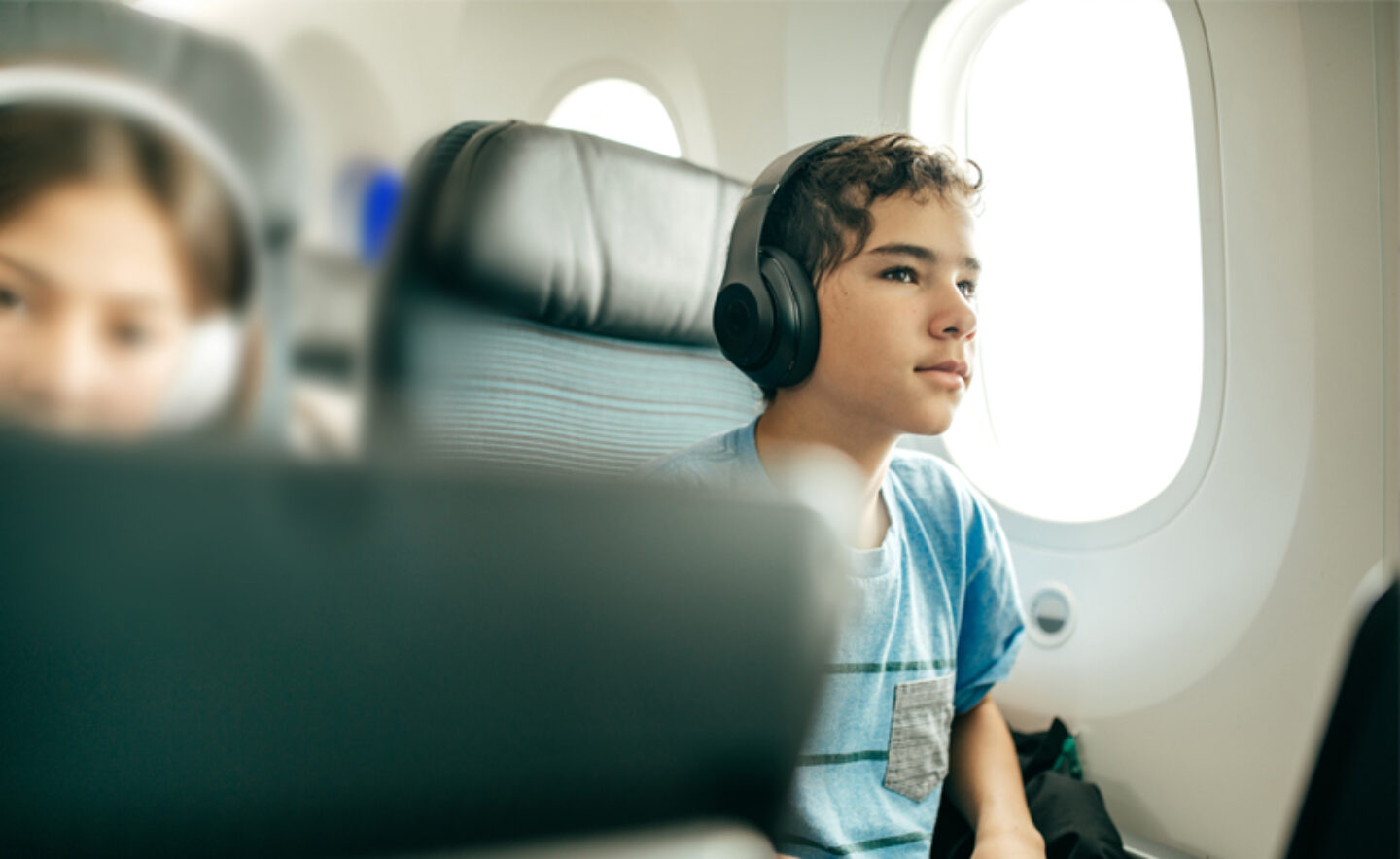10 Air Travel Tips For Effortless School Trips
For many students, a school trip abroad will be their first time travelling without their parents and for some it will be their first-time travelling on a plane at all!
To help you navigate from check in to landing with minimal teenage turbulence, our experienced former teachers-come-teacher tour leaders have shared 10 of their travel hacks for air travel with a school group.
1. Find a meeting point
If you have a long distance to travel to the airport, it might be a good idea to meet at your school and travel to the airport together.
If you decide to meet at the airport instead, leave enough time to get the whole group checked-in and accommodate for any late arrivals.
Unsure of where to meet? Find out the check in area that your airline uses. These are normally labelled with large letters or numbers which makes them excellent muster points.

You will also need a meeting point in departures before boarding the flight. Choose a recognisable shopfront or marker and tell students that regardless of gate changes, delays or information they see on departure boards to meet at that point with plenty of time to walk to the gate.
2. Set your expectations
It’s understandable that some students get over excited before a trip away from their parents.
One way you can encourage good behaviour is to write a contract for both students and their parents to sign, agreeing to their expected levels of behaviour on the trip.
Having a copy of this contract with you on the trip can give you a chance to warn students of the promise they have made at the first sign of disruption.
The behaviour contract prepares the parents of the expectations on them in the unlikely event their child breaks their agreement and may be sent home.
Every group is different so you can tweak the contract according to your needs.
3. Make students easily identifiable
Personalised hoodies, t-shirts or wristbands are a great way to keep track of your group.
You can include your schools name so that students are easily identifiable.
Try something as simple as a small printed business card including the group leader’s name and telephone number for the students to keep in the back of their phone case or in their wallet.

4. Share packing tips
Explain to your group what items they are allowed to pack into their hand luggage and what items they should keep in their hold luggage.
If you are a frequent flyer this information might seem obvious but first-time flyers could be caught out.
Consider the age of your students and how much packing and repacking they are likely to do on their trip. If it’s appropriate, why not tell each student to print their packing list and tape it to the inside of their case. At the end of their trip they can then check off items as they are repacked so they don’t leave anything behind. Younger children particularly benefit from this method.
5. Count to 10
Designate around 10 students to each teacher in your group. This teacher will be responsible for making sure their students are present and ready at each stage of the journey. Smaller groups are easier to get through security, board the plane and easier for you to count.
6. Efficient Security Checks
Explain the security procedure to your group before they approach the security entrance. Make sure your students know which items to take off before walking through the metal detectors or full body scanning machines.
Younger students can become overwhelmed if they are searched or if their bag is examined, especially if they are nervous about the trip in general. Making them aware that this is a possibility beforehand so they understand what will happen if their belongings or person needs to be searched.

In your groups of 10 students or fewer, make sure the teacher goes last so no student gets left behind.
Latest government guidance on hand luggage restrictions
7. Monitoring Passports
Your decision of who should hold on to passports should depend on the age of your students and the level of responsibility they are used to.
Generally speaking, we recommend that teachers hold all passports to minimise the risk of them being lost, however if you want to trust the students with this responsibility, they’re being stored in a secure but easily accessible place. If it’s stuck at the bottom of their rucksack they may cause delays through passport control!
If you’re travelling with us, you can call our emergency number if a students passport goes missing and we will arrange an embassy appointment.
8. Navigate the airport
Here are some ways you can make your time at the airport run smoothly:
- Point out some key locations in the departure lounge, for example the toilets and places to buy water and snacks.
- Have some spare cash for delays.
- Hours of delays can be a lot easier if everyone is fed and watered
- Keep students informed of the likely delays so they can manage their own expectations of time
9. Prepare for your flight
Check your itinerary to see if food is provided on the flight and advise students whether they need to buy a snack or drink before boarding.
It’s a good idea to also check your itinerary to see when your first meal will be after arriving so students can decide whether to buy snacks for the meantime.
For entertainment, you could bring paper activities to entertain students, but most students will likely bring an electronic device on board.

If you are travelling on a long-haul flight, you should receive a meal to sustain you but fussy eaters might be better to bring extra snacks just in case.
Small packets of sweets can help students with the cabin pressure during take off and landing, plus it could distract nervous flyers.
10. Let the Cabin Crew take over
Remind students that once on board the cabin crew are in charge.
For security reasons all students should be sat in their assigned seat, this is a simple way to avoid some friendship dramas early on in the trip.
If you have any nervous flyers in your group (that includes teachers), check in with them after any times of turbulence. Other than keeping an eye on your group, once on board you should be able to relax and enjoy your flight, trust that the cabin crew will alert you if the students need your help.

